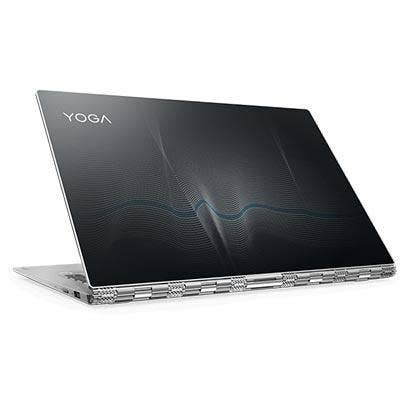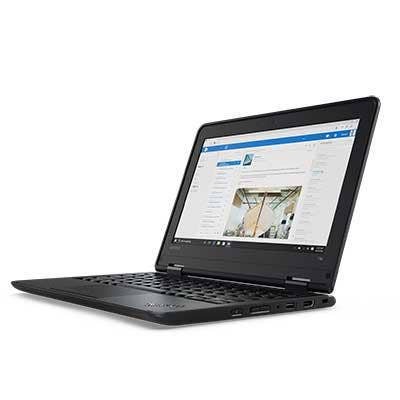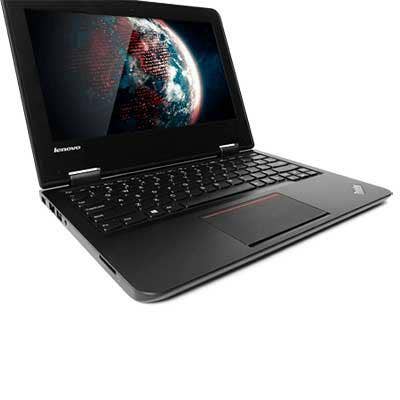Lenovo's Kinlaw On Resolving Issues Created By 'Drastic Change' In The Channel Program, Putting Partners In Position To 'Win Based On Merit'

Kinlaw On The Record
Starting Oct. 1, Lenovo rolled out a host of changes to its channel program structure, affecting margins on PC products for some VAR partners. Sammy Kinlaw, who serves as the channel chief for Lenovo's North America PC business, said the moves were "difficult" but necessary to make the pricing structure more equitable for all resellers. "I had really to make a drastic change," he said.
The result, Kinlaw said, is that Lenovo has "created an even playing field where every VAR can participate." He sat down with CRN at Lenovo's North American headquarters in Morrisville, N.C., to discuss how Lenovo has worked with partners to adjust to the changes. "Anyone that had an end user that was at risk or in jeopardy, we've listened and worked to make sure we had something that VAR could take to the end user to keep the business," Kinlaw said. "I personally have gone over 200 individual opportunities, and we've resolved every one that's hit my desk."
What follows is a portion of Kinlaw's conversation with CRN.

Are VARs continuing to drive a lot of your growth?
We've been very, very pleased with VAR growth over the past several years. I have a network of 20,000-plus [VARs]. Those VARs buy through our distribution community. And VARs continue to be the ones who are opening up new doors to new customers. … So are VARs just as important today as they were six months ago? Yes, absolutely. No change in that strategy.

What was the purpose of the changes that took effect in October?
The intent for the programmatic changes was all based on customer centricity and Lenovo controlling the market and being closer to the customer. And you've got to also think about the environment that we're in. SSD, video, memory, processor, all those costs are increasing. The current outlook based off our global supply chain and feedback we're getting is, costs are going to continue to escalate through the new calendar year. So the days where a higher feature-function for lesser price [occurred] are somewhat challenged. So that's one thing we've certainly been dealing with, and understanding, and evolving -- while yet trying to expand our market, expand our number of customers. And continuing to have a competitive PFV -- price function value -- in comparison with HP.
Secondly, the creation of programs for us had driven some inequalities in the marketplace. Meaning, opportunistic buys could offset VARs that were legacy, and all of a sudden have a price point that was unreasonable.

What do you mean by 'opportunistic buys?'
[Certain] partners could all of a sudden buy in through distribution-type programs and have a price point that was lower than legacy. And that wasn't a good thing for us. Also, some of the program stack that I had out previously was allowing bids in the marketplace to be below cost. So that's not a healthy environment. That doesn't lead to a healthy VAR system -- for VARs being able to win on their merit, and being able to win on capability, and being able to win based off of Lenovo history and knowledge and awareness of products. And I had really to make a drastic change. And changes like that -- no one likes change -- but we had to make some major changes. And the intent for those changes was to create a program where partners could fight for their dinner, where partners had equality, where partners weren't dealing with velocity-type, entry-level pricing undercutting [distribution] cost.
That was not an easy journey for us. But that's over with. Programmatic changes are done and in place. Our intent is to remain static for the next multiple quarters. So the programs that are there, partners can depend on them, can assume that they're going to remain in place.

Were some partners more affected by the changes than others?
All partners were affected in this. Really, there was no one not affected. Some more than others. Certainly, partners that were focused on velocity-type, entry-level pricing, where they wanted to buy one or two SKUs at multiple points below cost -- those partners were possibly affected greater than others. But now we've created a level playing field where partners win based on merit. … Ultimately, all of this was done to drive sales out faster, [for] Lenovo to control the price point in the marketplace. We don't want below-cost offers being widespread through an e-tail community that offsets the ability of my value-added reseller community to participate.

So companies were buying Lenovo products at a lower cost than normal and reselling them online?
Exactly. We shut that down, essentially. Take a product like the Yoga 920 in front of you -- perhaps a partner had the ability to take 20,000. The programmatic stack that I had in place then allowed that particular partner to possibly receive a price point that nobody else could compete with. But yet they had baselines. And so I had the inequality in the market -- 'Look I had a baseline for this stuff, now I can't compete anymore because this one e-tail-type offer has undercut all of me.' So we're talking in vague terms because I'm not going to call out exactly the specifics. But the point I want to make sure is clear is, I've created an even playing field where every VAR can participate. Our VARs that are within our Partner Engage program at the stack are going to have opportunities -- not pricing -- but opportunities to get closer to us. Either through training, through coverage models, through briefings, that kind of thing. That's what I'm looking to do.

What kind of feedback are you hearing from partners about this?
Partners that had special bids that were affected were not pleased. And we knew that was going to be the case. But I'll tell you what we've done -- my office has remained open 24/7 for 80 days, ever since Labor Day. And anyone that had an end user that was at risk or in jeopardy, we've listened and worked to make sure we had something that VAR could take to the end user to keep the business. So it's been somewhat of unique one-offs, and we've been very open-minded to listening to any VAR that had an escalation. We had a process in the channel where folks could bring issues forward, and that's worked. I personally have gone over 200 individual opportunities, and we've resolved every one that's hit my desk.

From what we heard, a number of partners didn't find the changes appealing overall, though.
We had a lot of enablement and training to do. And we've really spent the last 60 to 70 days doing that. We had a major change in our spiff program. Our spiff program before was made at an individual level. Spiffs were made available to VARs at a rep level. But at the same time, I had some exclusion for some partners who weren't qualifying for spiffs. Now every one of my VARs in North America are available to receive spiffs on the PC products. And that wasn't the case before. We did expand spiffs.

But there are lower rebates for some products, such as Chromebooks?
That's true. Chrome for us has been an interesting dynamic. I did [previously] say Chrome was not a priority, but I did say we wanted the Chrome business because it opened doors to other avenues to sell additional products. Our main competitor on Chrome has an entry-level price point that is very aggressive. Lenovo has focused on somewhat of the value side of Chrome, and tried not to be the velocity winner based on a price point. We have held our own in pricing and essentially not gone down a rathole to win on just a velocity SKU price. And that's proved very beneficial to us. Because we've been able to rectify and take what was a potentially money-losing scenario, and at least bring it back to profitability. So my thoughts on Chrome over the past six months have improved. Would I say it's a priority for me as I move into calendar 2018? You know what, it will be. It will move back into a priority status.

Why will Chromebooks become a higher priority again?
As you'll see at CES, we have an entire new portfolio based on new designs. And I'm thrilled with what we've done to be able to add even more value into these products, knowing that we're going to remain competitive on price points. That's going to open up share opportunities for us. At the same time, the new product designs are going to allow us to sell up the stack, just like we did with the Chromebook Yoga. [This was] a Chrome device that was in a Yoga format that was much more expensive than an entry-level, velocity Chrome clamshell. We had a unique price point and a unique design feature. So we were able to charge a little more because it had more design and value. And that was really good. That product did incredibly well this year.

Going back to your channel structure changes, we heard from partners that thought they could do better going with HP or Dell. Do you have concerns about that?
It always concerns me. If you walk through these hallways, no one's ever resting on their laurels or making an assumption that we keep our share. I always felt like we as a company operated as more of an innovative company that's on the rise. And so I'm always concerned. With these changes, are they going to allow me to continue growing? But you have to have faith in the vision. We have a strategy of premium products -- X1 Carbon, X1 Yoga, our workstation innovation. We have new strategies for education. We have channel programs that are predictable, consistent and clear. We have a very dedicated coverage model for all of our VARs — we have new things like Engage with a partner tiering system, which allows partners to understand value as they move up the stack from Authorized to Silver to Gold to Platinum. Those are all very big, holistic coverage models. So we're not moving away from the channel -- still 90 percent of Lenovo's revenues are driven by the channel. It would be insane as a company to risk that business.

So you don't feel like you're risking that business?
I felt like we made changes that were difficult. But to communicate down to a rep level, with the magnitude of changes, has not been easy. So it's taken a lot of work and engagement and communication, and communication, and communication. Lots of on-stage time for me. Lots of conference calls with lots of individual reps. So I keep my finger on the pulse of it. I know every day what our goals are, what our trajectory is, and what are the things we need to do to get there through the channel.

What are some of the other areas that saw changes?
We had to regroup on rebates. There was some discussion on rebates declining. And through the calendar Q3, we had to regroup somewhat on what we were offering as rebates and what we were not. But we've gone very aggressive with rebates on products. We're very aligned to [price function value], we measure it every week -- how we're competing against our competition. Dell, HP. What our list price is, what our street price is, how we think the competition's doing. We're very engaged at making sure our VARs have products that are street-price-ready, and that they can compete against the competition. Am I comfortable? I'm very comfortable.

Overall you haven't cut way back on rebates?
No. We've moved them around somewhat. We certainly are putting more rebates on premium-type product, which frankly is working for us. My premium growth is up year on year. Last quarter, my workstation business in the North America channel was up more than 40 percent year over year. You don't gain 40 percent year-on-year growth without having the right rebates, the right programs -- and the thing that we started with, most importantly, the right products. The P320 is the product that's garnering the most attention. It's the smallest workstation on the planet. The feature-function that it brings, nobody else has anything like it. It's 60 percent smaller than the competition, 30 percent lighter, it drives six independent monitors. … This product is really changing the game. We just won a large digital signage rollout with a large retailer because of the size and the feature-function that [the P320] has with it. That type of innovation is winning us new customers and expanding VAR profitability, and that's what we've got to focus on.

What can you say about investments in the channel going forward?
My coverage on things like workstation are expanding. I have a newly hired director of workstation channel sales [Jimmy Holbert] -- we're in the middle of building out a field force and an inside sales team to support our VAR community. The same thing goes with services. I have a new director of services sales [Stephanie Fagan], and she has an inside team, a field team she's built out, and her focus is to drive new things like Device-as-a-Service, which is really a key part of our strategy for 2018. So Device-as-a-Service, or PC-as-a-Service, we've been hearing that buzzword for a long time. It's finally come to fruition. And the offering that we have, we think is very dynamic, and unlike anything that I've read from the competition.
Do you have deals in Device-as-a-Service?
We've closed multiple deals since we've come up with it over the past 60 days. I'd say more than 10. I can't say who. But they're large deals -- million-dollar deals.